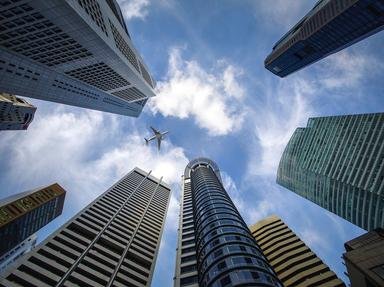Quiz Answer Key and Fun Facts
1. A good seaport must have access to the sea, extensive internal infrastructure to support the industry and capability to distribute products and enough maritime space to accommodate the amount and size of the ships required to transport goods. Which one of the following global cities does not therefore meet the requirements of being a global seaport?
2. This city (pictured) has always had a busy port with its famous river traffic looking like a freeway in other countries. In 2005 this became the world's busiest port, which is?
3. As well as access to the sea and good supporting infrastructure, another factor that makes a great port successful is something the locality has no control over: geographical fortitude. Blessed with a great location, which pictured city was formerly the busiest port in the world?
4. The United States' busiest container port is in perhaps a surprising location. In which city/cities is it located?
5. Not quite the same question as the previous one. This city is part of a port system that was the first port to ship 240000 kilotons of cargo in 2016. If the picture of the bridge over the wide river doesn't help, the picture below of the city itself will. What American city is depicted?
6. The photo depicts Hay Point Port, the largest in Queensland, Australia. Yet the name is unfamiliar. Why is this port so big?
7. Not all great seaports are on the coast. All four of these European cities pictured are on rivers or canals. Which one is no longer a busy seaport?
8. Vancouver has ocean frontage compared with its larger city rivals, Montreal and Toronto. Is Vancouver a container-driven port?
9. In 2012, there was an increase in UK maritime and aviation activity when London hosted the Summer Olympics. Were either one of the two cities pictured (London and Liverpool) the busiest UK port at that time?
10. The three Russian seaports, Vladivostok, St. Petersburg and the Baltic Sea port of Kaliningrad, have the utmost importance to Russia. Why?
Source: Author
1nn1
This quiz was reviewed by FunTrivia editor
agony before going online.
Any errors found in FunTrivia content are routinely corrected through our feedback system.
